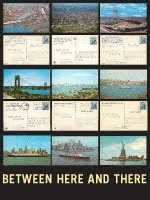
Themes of dislocation and displacement in contemporary photography are explored in this exhibition of works from the collection by artists such as Vito Acconci, Ed Ruscha, Richard Long, On Kawara, Bruce Nauman, Rineke Dijkstra, Thomas Struth, Darren Almond, Doug Aitken, Lothar Baumgarten, Matthew Buckingham, VALIE EXPORT, Felix Gonzalez–Torres, Svetlana Kopystiansky, Dennis Oppenheim, Allen Ruppersberg, Fazal Sheikh, Erin Shirreff, Robert Smithson, Anne Turyn, Jeff Wall, and Weng Fen.
Beginning in the mid-1960s the work of art started to break free from wall and pedestal. Fixed categories and traditional types of objects were often no longer seen as sufficient to capture the contingencies and complexities of modern life. Finding the proper idiom with which to express each idea became supreme, and the artwork could now take the form of a walk, a twenty-five-foot book, or a series of postcards detailing the time the artist rose each day.
It is not accidental that so many of the types of works seen in this exhibition trace shambolic or meandering paths or that the subjects appear to be the chaotic output of some enigmatic—though highly specific—criterion; digressions without logical end or endlessly attenuated gestures hollowed out the spot where "meaning" once went and made that formerly orderly, plentiful place ghostly, dislocated, and emblematic of the spooky, comical vacuity of the modern world. Any satisfaction to be had, the artist seemed to say, was now catch-as-catch-can—in the space between private imagination and public record. Photography (and, by extension, video) was mechanical, reproducible, and once-removed, making it an ideal tool for reflecting the rootless, unfixed nature of the modern world.
If dislocation were somehow inherent to the low-tech, ad-hoc nature of art in the 1960s and 1970s, the period that followed witnessed the restoration of established genres and formats (albeit modified by Conceptualism) while epochal and historical transformations were wreaking havoc upon the old geopolitical certainties. Displacement was no longer simply a formal or structural trope to convey isolation and alienation but an actual uprooting of individuals and peoples caught up in global strife. Some artists responded humanistically with tried-and-true tools, such as the old-fashioned view camera on a tripod, which could bring the past to the surface and memorialize the present for the future. At the same time, photography was used interchangeably with video and film—often in absorbing multimedia installations—by other artists who sought to reflect the mind-bending perceptual and psychological distortions that accompany a global existence that is also, increasingly and paradoxically, virtual and unmoored.
It is not accidental that so many of the types of works seen in this exhibition trace shambolic or meandering paths or that the subjects appear to be the chaotic output of some enigmatic—though highly specific—criterion; digressions without logical end or endlessly attenuated gestures hollowed out the spot where "meaning" once went and made that formerly orderly, plentiful place ghostly, dislocated, and emblematic of the spooky, comical vacuity of the modern world. Any satisfaction to be had, the artist seemed to say, was now catch-as-catch-can—in the space between private imagination and public record. Photography (and, by extension, video) was mechanical, reproducible, and once-removed, making it an ideal tool for reflecting the rootless, unfixed nature of the modern world.
If dislocation were somehow inherent to the low-tech, ad-hoc nature of art in the 1960s and 1970s, the period that followed witnessed the restoration of established genres and formats (albeit modified by Conceptualism) while epochal and historical transformations were wreaking havoc upon the old geopolitical certainties. Displacement was no longer simply a formal or structural trope to convey isolation and alienation but an actual uprooting of individuals and peoples caught up in global strife. Some artists responded humanistically with tried-and-true tools, such as the old-fashioned view camera on a tripod, which could bring the past to the surface and memorialize the present for the future. At the same time, photography was used interchangeably with video and film—often in absorbing multimedia installations—by other artists who sought to reflect the mind-bending perceptual and psychological distortions that accompany a global existence that is also, increasingly and paradoxically, virtual and unmoored.
The Metropolitan Museum of Art 02.07.2010 - 13.02.2011